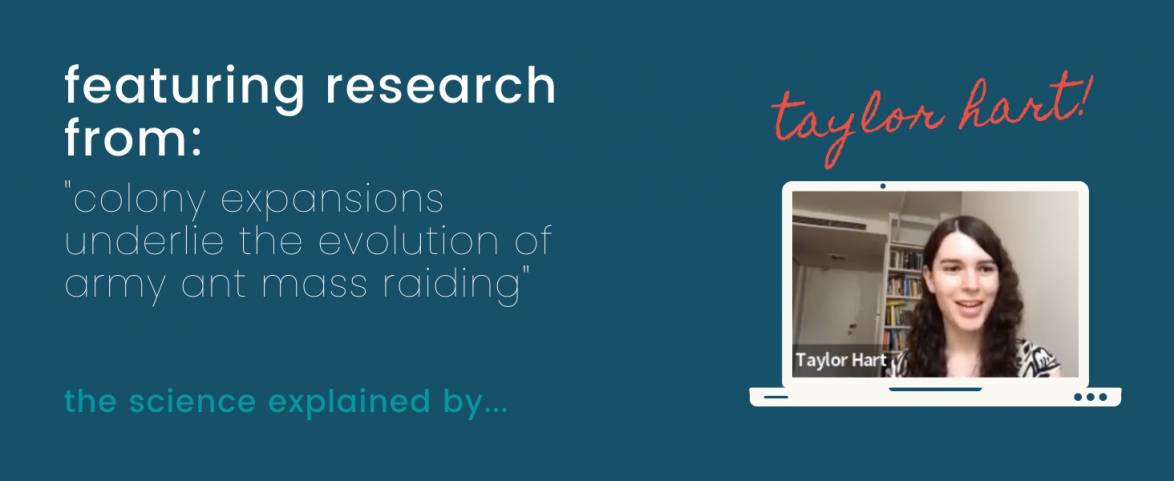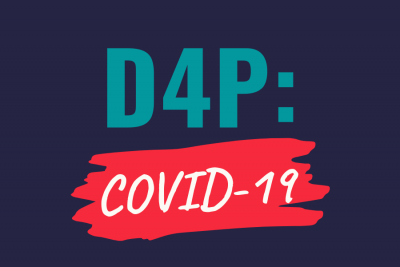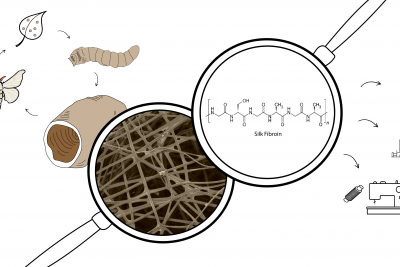How did ants evolve to become social hunters?
Do yourself a favor and use Google image search for the following phrase: Army Ant Cathedral. If you do, you will find yourself looking at an amazing picture of tens of thousands of army ants, linked together to form a giant temporary nest, or bivouac. This colony is fed by an overwhelming assault across the forest — a mass raid. While we have learned a lot about what happens during mass raids, we know very little about how this highly cooperative social behavior has evolved in army ants. In this D4P: Social Behavior episode, Taylor will present recent insights from her colleagues in the Kronauer lab on the mechanisms of closely-related group raids and the possible evolutionary origins of army ant mass raids.
Paper Summary
In this paper from Daniel Kronauer’s lab, the researchers investigate how group raiding works and how group raiding behavior relates to mass raiding behavior.
- They begin by asking the question, what happens during a group raid? They record videos of clonal raider ants performing group raids and use computers to track the location of each ant in the colony. They find that group raids consist of several predictable behavioral phases as single scouts find food, lay a pheromone trail back to the nest, recruit nestmates to the food using a second pheromone, wait by the food for some amount of time, and eventually carry it home.
- Next, they ask how mass raiding ants and group raiding ants are related. They examine the position of army ants on the evolutionary tree and confirm that army ants are closely linked to mass raiding behaviors and large colony sizes, and that army ants most likely evolved from group raiding ants with small colony sizes. They hypothesize that changing colony size might explain some of the differences between group raids and mass raids.
- Finally, they ask how increasing the population size of clonal raider ant colonies affects their raiding behavior. They repeat the group raiding experiment using colonies with different population sizes, and find that larger colonies have more ants leaving the nest in groups, and very large colonies start to perform raids that look similar to army ant mass raids. This provides evidence that ants can switch between behaviors that are more like group raids or more like mass raids by increasing population size.
Go deeper
Questions for Learners and Discussion Points for Educators
- Why use social hunting at all (vs every individual collecting their own food)?
- Pros: Social hunting pros: more efficient, division of labor, sharing food source information
- Solitary hunting pros: self-sufficient, don’t depend on others, no concerns about sharing
- Where are possible sources of conflict from social life? How might groups resolve/prevent conflict? (In eusocial insects like ants, colonies are family groups and high relatedness reduces conflict, but there are many other reasons as well)
- Why might one species use group raids and another use mass raids?
- Tradeoffs for sending out one scout at a time vs many at once
- Costs and benefits of having most ants stay at home until food is found
- This discussion focused on hunting raids, but what about other ways of getting food? Why use raids vs. farming fungus, tending aphids for honeydew, scavenging, or eating plant material? Also consider discussion on food sources in relation to humans
- Group raids have a long phase in the middle called ‘preretrieval phase’ where ants mostly sit on food before bringing it home. Why might the ants do this?
- This is completely unknown! Here are a few possibilities:
- Making sure prey doesn’t fight back
- Deciding if food is good quality
- Checking for the presence of more food nearby
- Design an experiment to test one of these ideas, or ideas from the students
- This is completely unknown! Here are a few possibilities:
About Our D4P Fellow
Taylor is a former Ph.D. student in the Laboratory of Social Evolution and Behavior at the Rockefeller University. She studied the processes of pheromone sensation and other social behaviors in ants. She previously studied at Hunter College. Taylor served on the board of RockOut, Rockefeller’s LGBTQ+ organization, and has worked as a science outreach facilitator at RockEdu on several occasions. She is also a visual artist and a lover of plants, nature, and science fiction.










